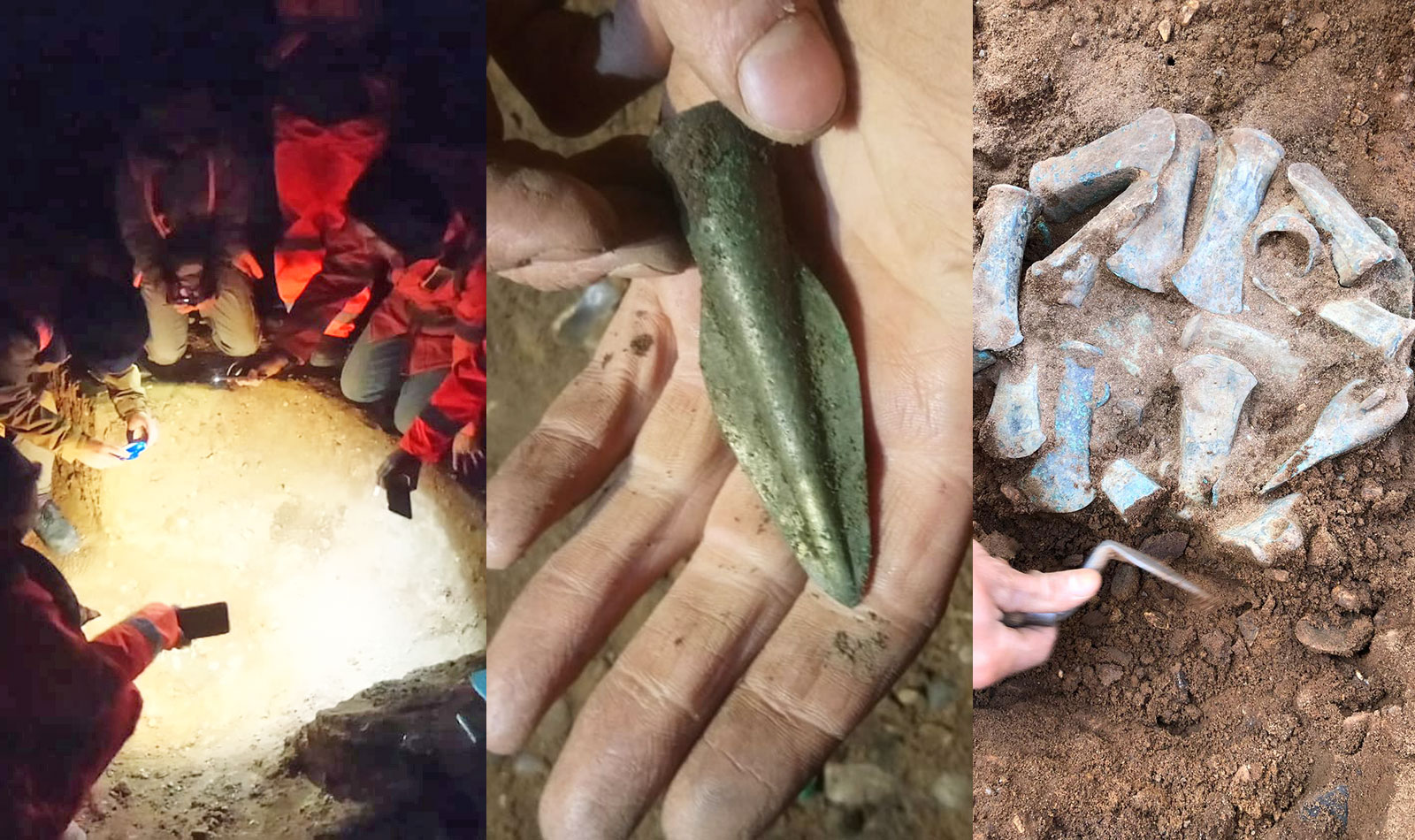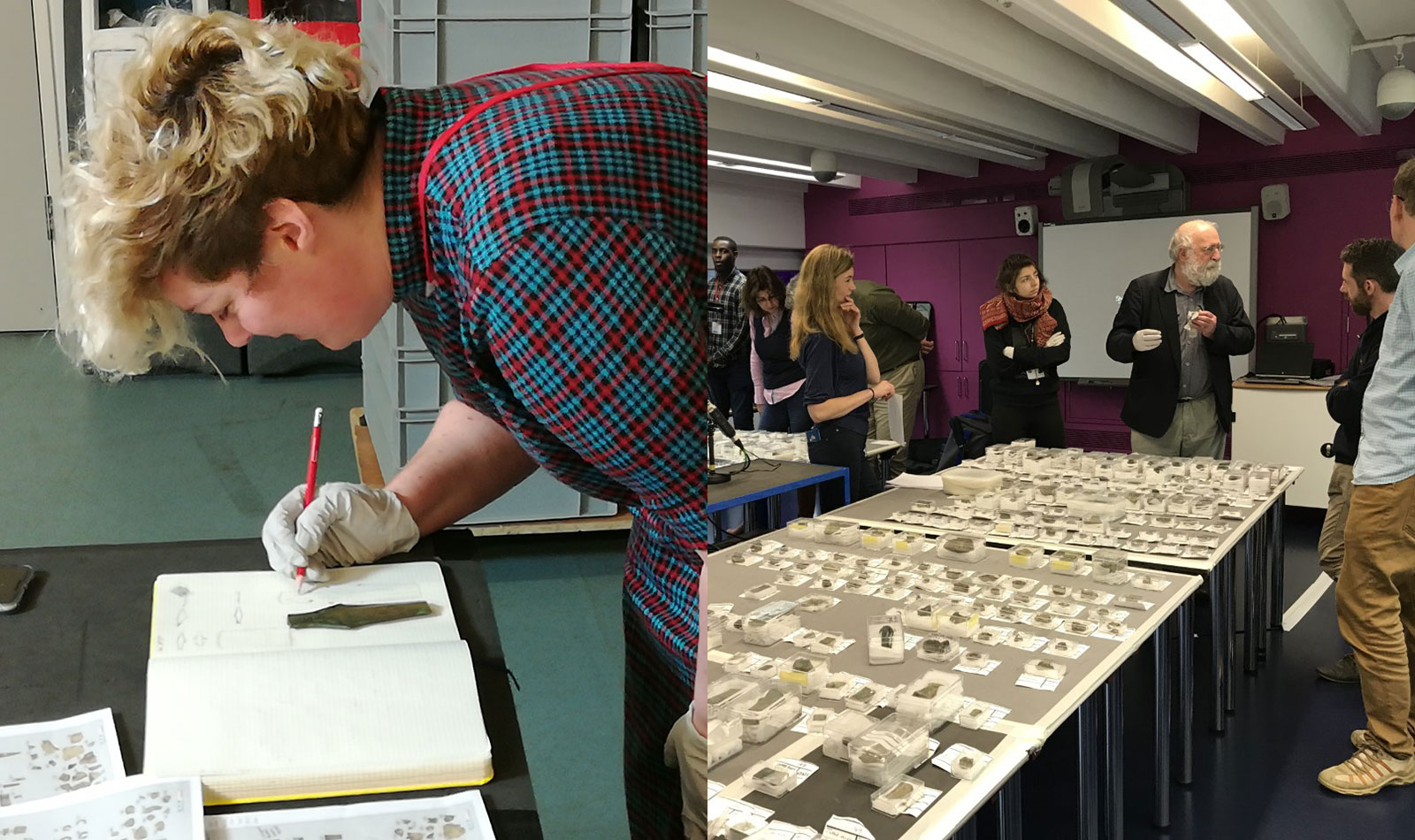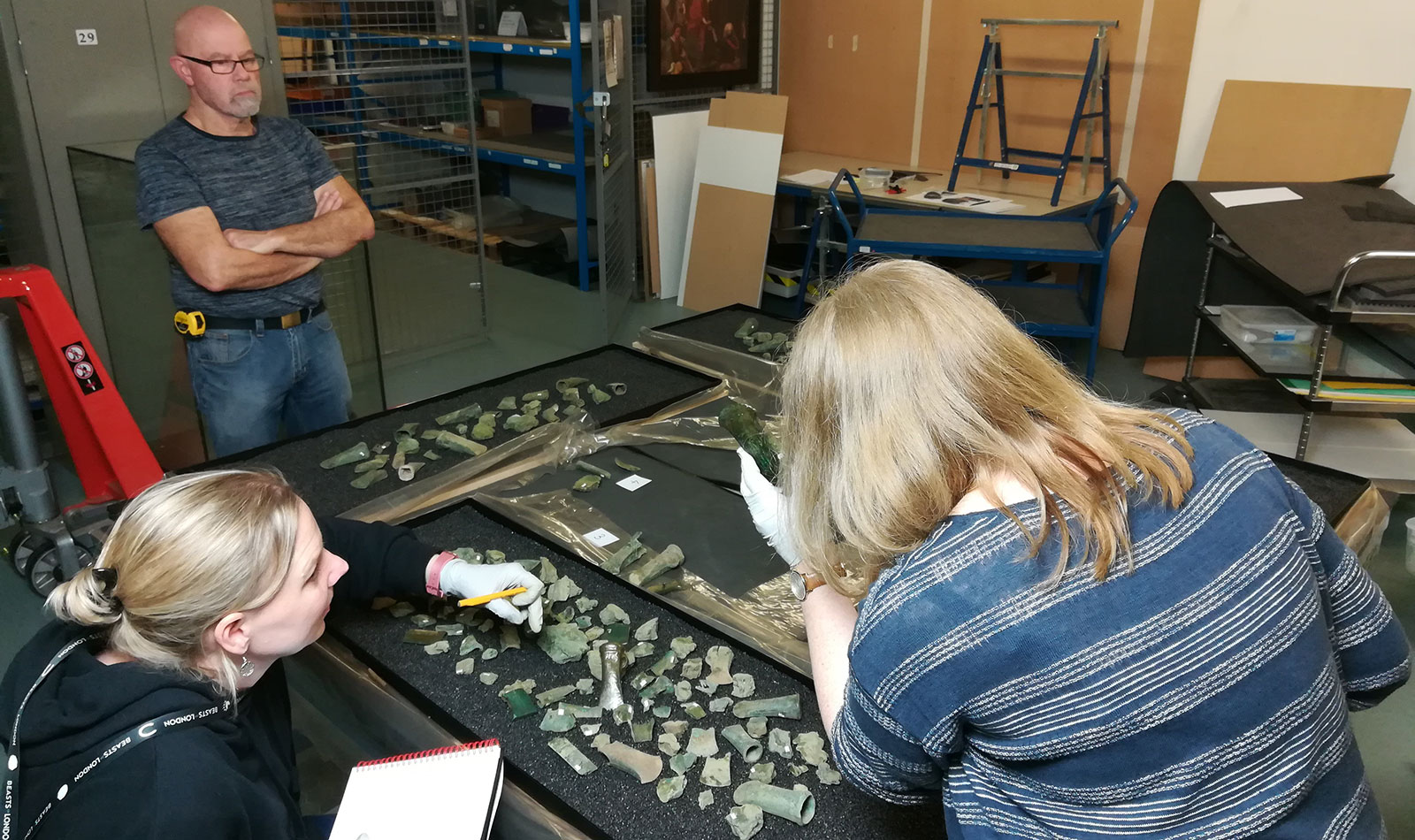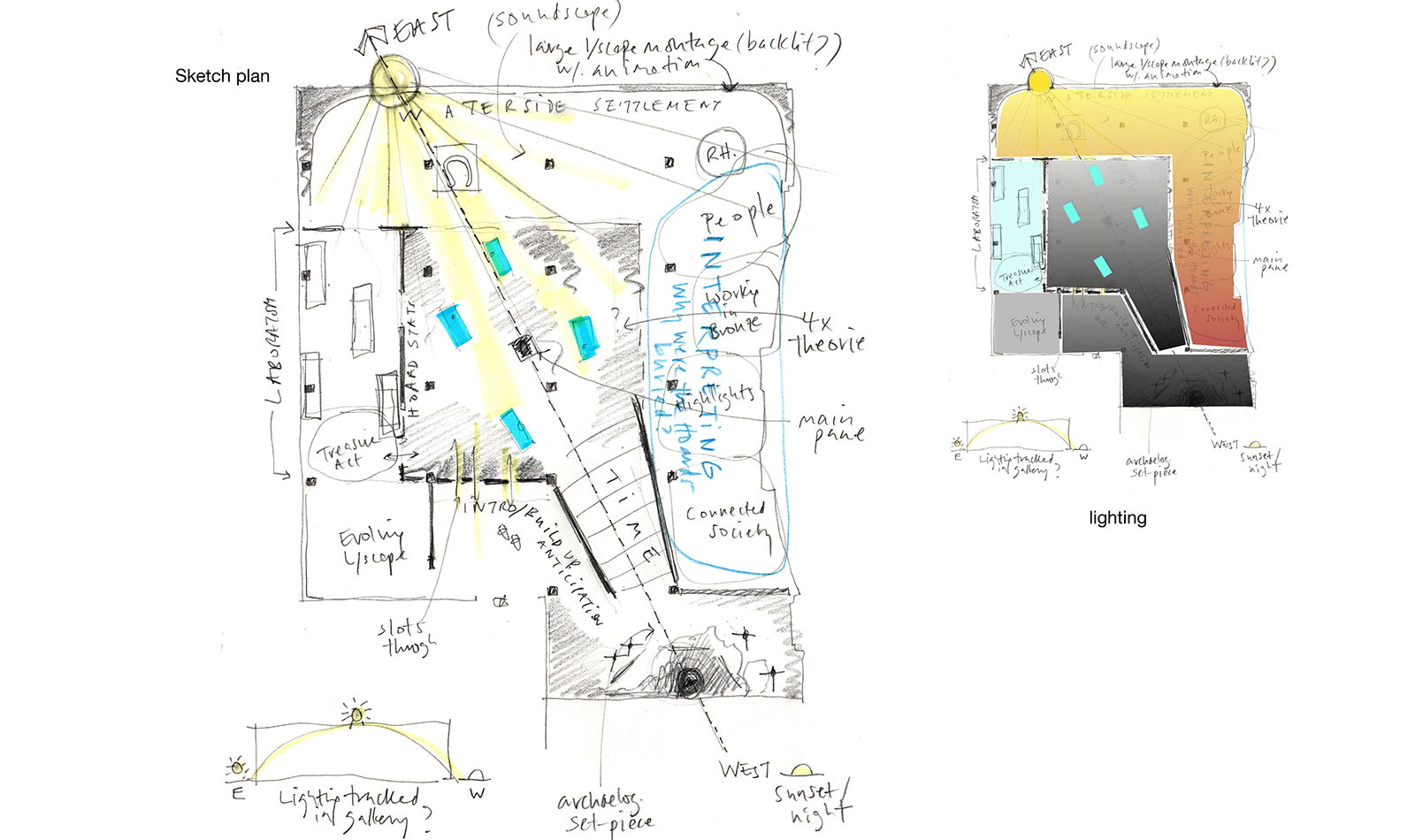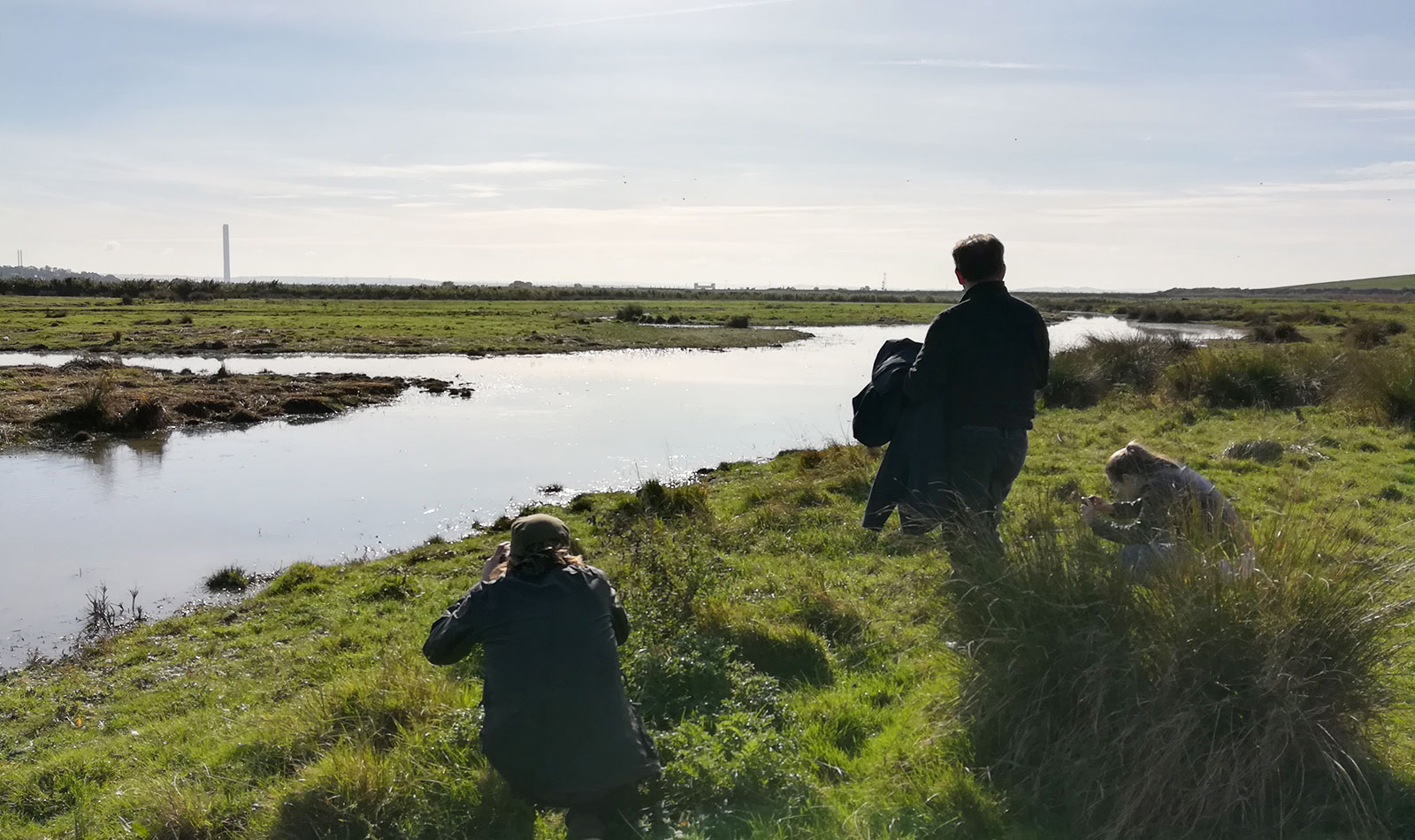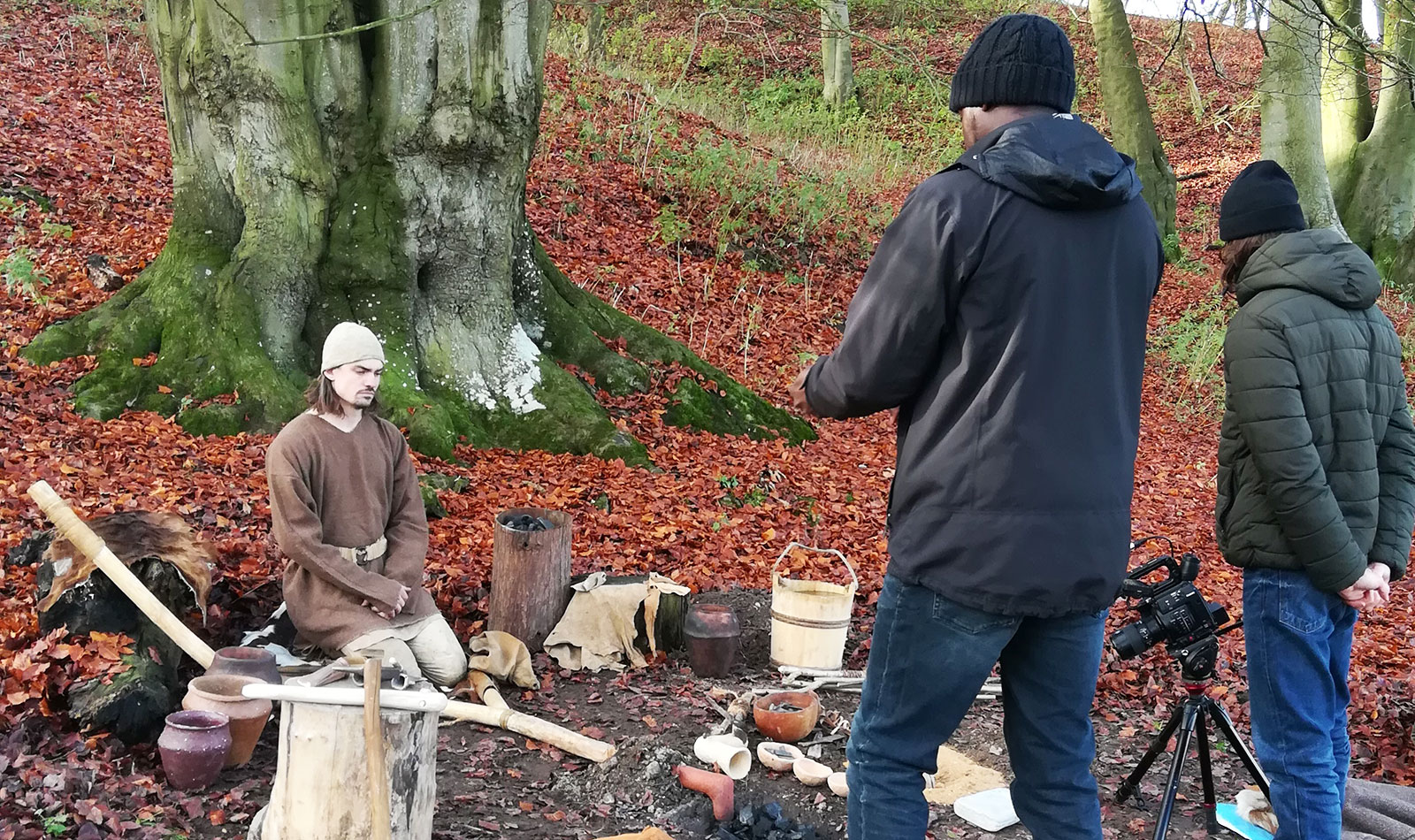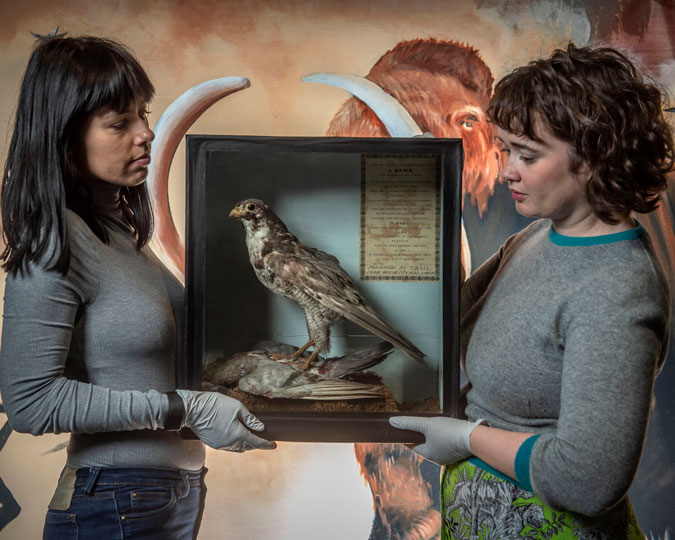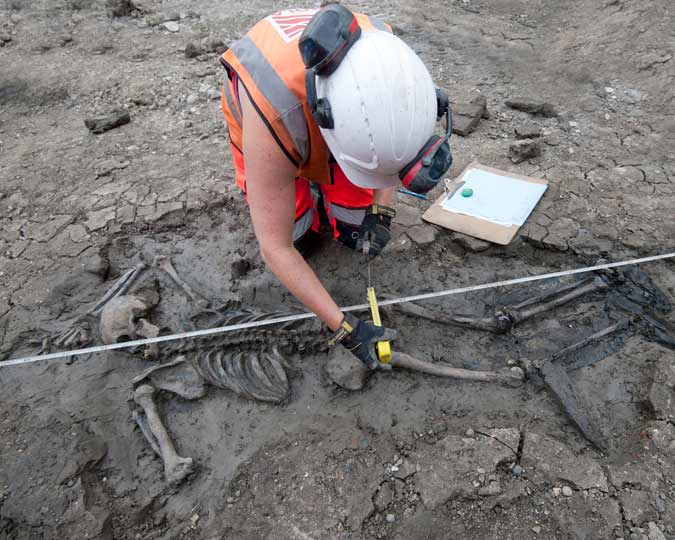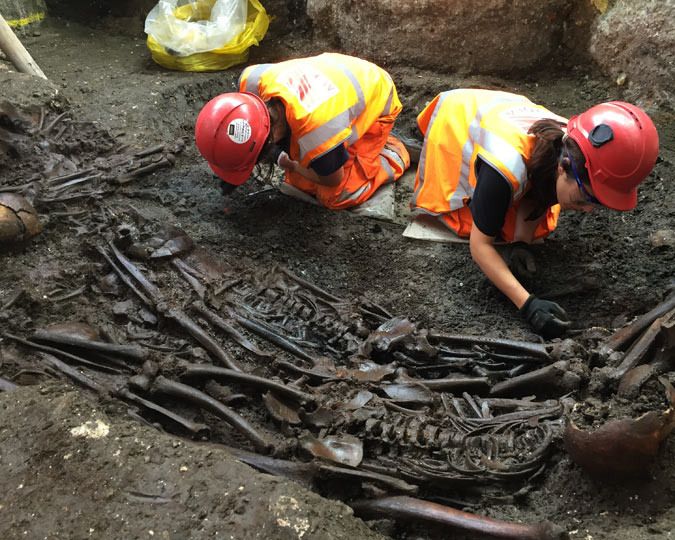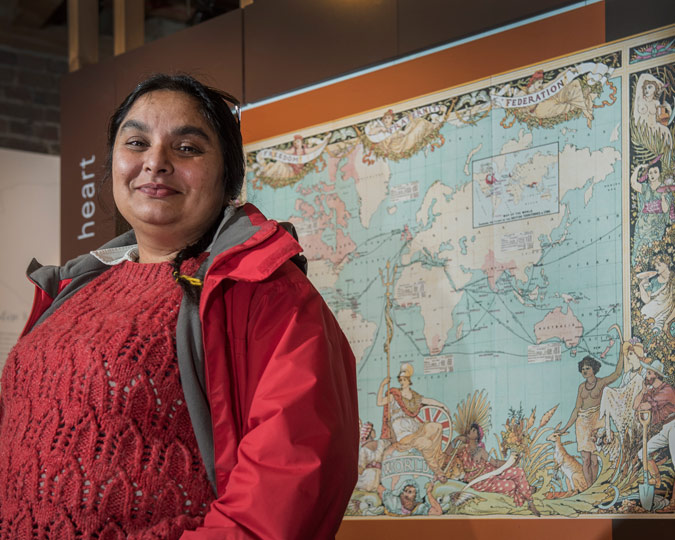Almost two years ago in a field in Havering, Harry Platts made the discovery of a lifetime. He was working as a field archaeologist for Archaeological Solutions. On the afternoon of Friday 21 September 2018, Harry uncovered the first axe that was just the beginning of the 453 Late Bronze Age objects that make up the Havering Hoard.
In those intervening two years we have researched and recorded, conserved, worked through the legal Treasure process, planned and designed an exhibition, and had a six-month pause as the country entered the Covid-19 lockdown. It has been a whirlwind and involved a huge team of people spanning different specialisms. Here, I will share a glimpse of the ‘behind the scenes’ activity as we took the Hoard from discovery to display.
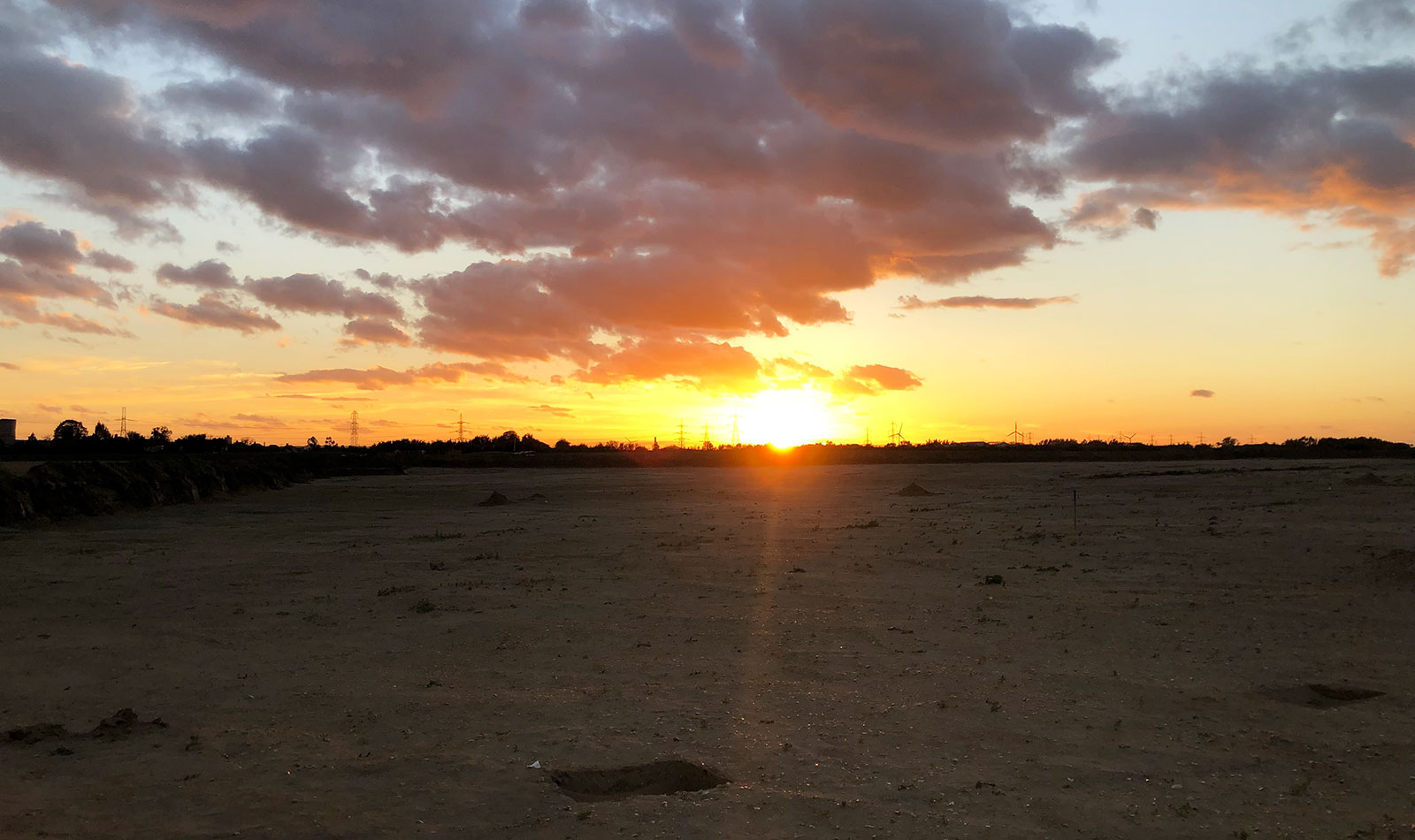
Sunset over the site
This is my favourite photo taken on site. Archaeologist Alice Short was part of the team excavating hoard one and she just turned around as the sun was setting and took this photo. It is a really powerful image and gives a beautiful link with the Bronze Age and the symbolism of the sun.
Working on the objects
We laid out all 453 objects of the Havering Hoard only once. It was for a day where we invited the archaeological team and researchers into the museum to see the four hoards and to discuss interpretation and further research avenues. It took a small team of us approximately 2 hours to lay out all the objects and the same again to pack them away at the end of the day. For all other work on the Hoard we worked on a selection of the objects at a time and we carried out regular audits to ensure all artefacts were correctly located.
The importance of the sun
The rising and the setting of the sun each day mark a beginning and an ending. For many people these also form moments of reflection or a simple appreciation of beauty. The appeal is universal. When I explained to the design team (Skellon and Seeing Things) that the burial place of the Hoard and the orientation of the enclosure were aligned east – west following the movement of the sun, it sparked their imagination and led to these sketches.
The sun is central to the gallery providing a link between the Bronze Age and the moment of excavation of the first hoard as the sun set. The lighting has been carefully planned to reflect the warmth of the sun and to be directional, coming from the sunrise. As a contrast, the light changes in the archaeology section near the end to create the feeling of a conservation laboratory.
Filming
The challenge with this exhibition was always how to make it visually interesting when you are dealing with so many objects that are very similar in appearance. We tackled this by using photography and film to include people, the landscape and also processes from archaeology, conservation and metal working. It was a highlight of the entire experience to be a part of the filming to capture the sunrise at Rainham Marshes and also the process of bronze casting replicating Bronze Age techniques.
To film the sunrise we worked closely with Andrew Gouldstone at RSPB Rainham Marshes. The team from Chocolate Films, Seeing Things and I spent a very happy few hours exploring the marshes to find just the right spot. A place where there were minimal modern intrusions and a balance between water and land that would evoke the Bronze Age landscape and also give the best end result. Rainham Marshes are very close to the site and they are a historic survival. A piece of the landscape that has been protected from modern development. We were incredibly lucky that the weather conditions cooperated and gave us the opportunity to film a stunning sunrise.
In December 2019, we spent a day in another ancient landscape, this time in Wiltshire at Berrycroft Hub. We were filming James Dilley casting bronze. James, a Prehistoric Technology Specialist, carefully researches every aspect from the clothes he wears, to the tools and techniques. Through this work he gains a unique insight into how the tools and weapons contained within the Hoard would have been made, used and recycled. It was fascinating watching James working and I left with a greater appreciation for the high level of skill, patience and ingenuity of the Bronze Age metalworker. It is a process akin to magic.
Installation
My favourite part of creating an exhibition is always installation. It is that moment when everything comes together in a flurry of activity. All the ideas and hard work from the entire team can be seen in the finished exhibition and then it is a thrill to be able to open the doors and invite people in.
The exhibition runs from 11 September 2020 to 18 April 2021 at the Museum of London Docklands. Entry is free but please book a ticket.








